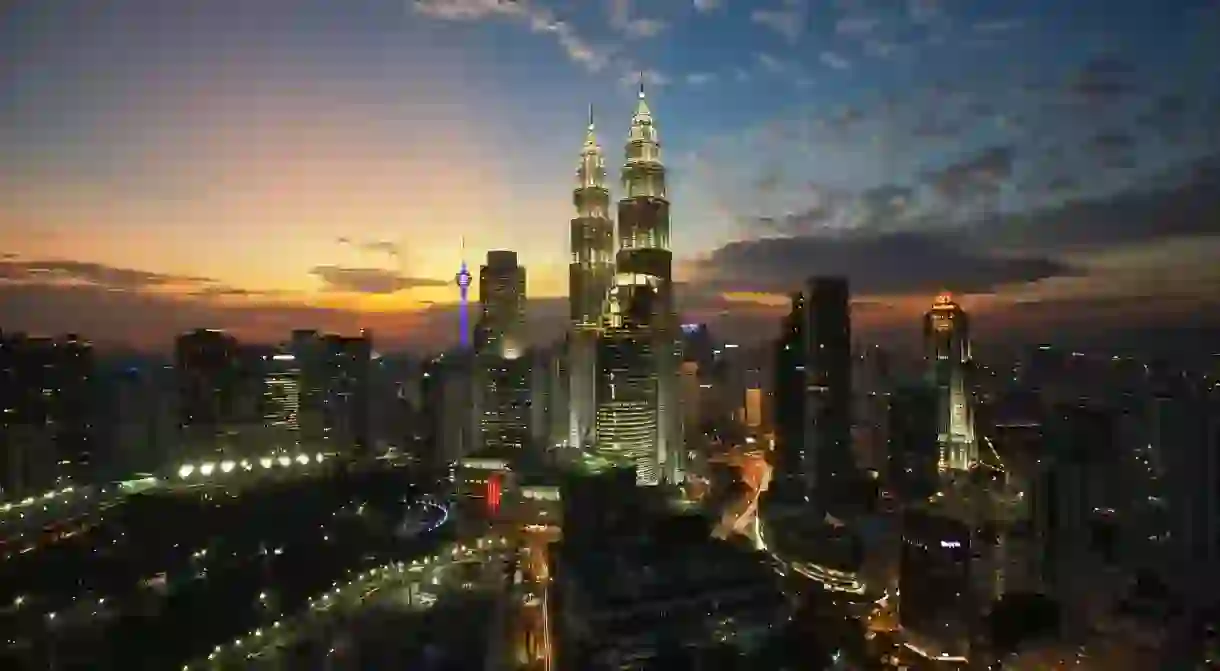How to Navigate Transport in Malaysia

Malaysia combines tropical rainforests and islands with colonial architecture and world-class food. Here’s our guide to transport in Malaysia for travelling from one destination to the next and getting around towns and cities.
Buses
The bus is one of the most budget-friendly types of transport in Malaysia. From the city bus in Kuala Lumpur to the comfortable long-distance coaches travelling from one city to the next, the bus is a cheap way to get around. If you’re in the city, tickets start at approximately RM1 ($0.25 USD). Flag the bus as it approaches and give the driver exact fare if possible. Tickets for longer journeys can be bought beforehand or on the day or travel, depending on the schedule. Airport buses connect both KLIA and KLIA2 airports to KL Sentral, departing every 30 minutes. Tickets cost approximately RM12 ($3).
Local tip: always anticipate delays with Malaysia’s notorious congestion and plan for journeys to take longer than expected.

Trains
Railways connect Johor Bahru and Singapore in the south to northeast and northwest Malaysia. From above, the lines resemble a huge ‘Y’ which split to the south of Kuala Lumpur. Long distance trains are comfortable and air-conditioned. Tickets range from RM20 to RM80 ($5 to $20 USD), depending on the distance and carriage class. Either book tickets online or at the station at least 24 hours in advance to ensure a seat. Other popular train routes are from KLIA to the city centre. The KLIA Ekspres & KLIA Transit takes 28 minutes from the airport to KL Sentral.
Local tip: always ask someone at the ticket office if you need to book tickets in advance. Some trains have limited tickets – when they’re sold out, they won’t let anyone else board. We also recommend female travellers to use the ‘women-only’ carriage to prevent unwanted male attention.


LRT and Monorail
Kuala Lumpur has both an LRT (Light Rapid Transit) and Monorail to get around the city and to satellite townships. Tourists often rely on this when they go sightseeing in Kuala Lumpur. Popular spots include KL Sentral, KLCC and Chinatown’s Petaling Street. As you enter the station, go to the small ticket machines near the entrance. Follow the instructors on the touchscreen, pay and it will dispense a small token. Scan the token as you enter the station and put it into the slot when leaving. A single journey costs a few ringgits depending on the number of stops. The tourists’ favourite route from KL Sentral to KLCC (and Petronas Towers) costs RM 2.40 ($0.60 USD).
Local tip: you’ll see lots of acronyms and names for this type of transport in Kuala Lumpur. They’re essentially the same. Just know the destination, pay and don’t lose your token!

Taxis
As with most countries, taxis can be a lifesaver or a nightmare. Some taxis in Kuala Lumpur use a meter while others in different cities quote a fixed price. Common sense applies when using taxis and it’s always a good idea to get your hotel to call rather than flagging one on the street. Travellers should also be aware that not all meters increase at the same pace. A short journey can cost a fortune by local standards with a tampered meter. Always ask a reputable source for an estimation of the fare. If the meter increases faster than expected, stop the cab, pay and get out.
Local tip: for a faster, cheaper and safer way to get around, download the GrabCar app and use this rather than taxis.

Ferry
Ferries are a common type of transport in Malaysia to get to its islands. Popular routes travel between Langkawi and both Alor Setar in Kedah and Penang Island. Almost every tourist will take the ferry between Penang’s George Town and Butterworth. Not only is the ferry a cheap form of transport in Malaysia but it offers the chance to get nice photographs of Penang. Other ferries travel to The Perhentian Islands and Pangkor Island in West Malaysia and between Kota Kinabalu and Labuan in Sabah. The duty-free status of Langkawi and Labuan means passengers pass through customs before boarding the ferry. This can sometimes be time-consuming. We suggest arriving extra early to factor in any unexpected delays.
Local tip: always double and triple check the ferry timetables as they tend to change at short notice.

Domestic flights
The fastest and most convenient transport in Malaysia for long distances is to fly. Airlines link Kuala Lumpur with Langkawi, George Town, Alor Setar and Johor Bahru among others in West Malaysia on a daily basis. All tourists need to fly from Kuala Lumpur to Borneo. Prices generally range from anywhere as low as $10 up to $70 USD, depending on the time of day and season. AirAsia offers several routes at the lowest prices. But seats are small, extra fees apply for baggage and delays are frequent. Malindo and Malaysia Airlines cover fewer routes at slightly higher rates while providing a much better flying experience.
Local tip: we recommend paying a little extra and taking Malindo for their bigger seats, in-flight entertainment and up to 20 kg baggage allowance.

The best apps for transport in Malaysia
The most convenient app for transport in Malaysia is GrabCar. After recently merging with Uber, GrabCar provides a fixed price taxi service. Download the app, put in the destination and the driver will pick you up. Apart from being cheaper than a taxi, it’s also a safer way to travel in Malaysia. Unlike taxis, GrabCar drivers have less incentive to take convoluted routes or cause problems as passengers rate their experience. GrabCar is available in most major cities in Malaysia, including Kuala Lumpur, Penang, Langkawi, Ipoh, Kota Kinabalu and Kuching. Tourists looking to use the intercity buses will benefit from the CatchThatBus app, which allows you to make reservations and ticket bookings on the go. The KL Transit app offers live updates on trains in Kuala Lumpur, providing reminders 15 minutes before departure.













